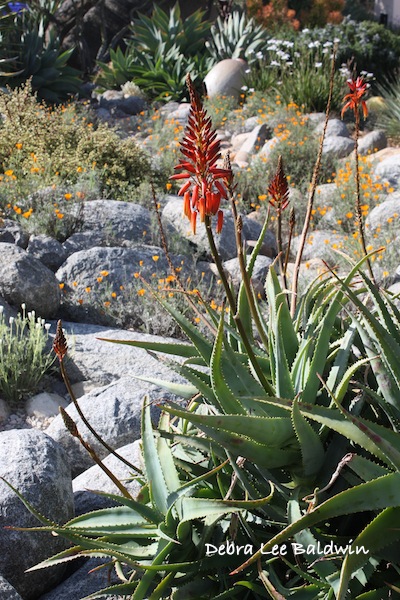
The desire to get rid of water-thirsty, high-maintenance lawns has led to the rise (no pun intended) of dry creek beds. After all, you have to replace all that garden space with something. Rocks and boulders are fairly inexpensive and create a natural setting. A dry stream bed can add a sense of motion (rushing water) to the garden. Here are a few dry stream beds I admire, and why.
The one above looks like something you’d see in the backcountry. Boulders are semi-buried, and amid them grow annual wildflowers. You get a sense that water once flowed through here but no longer does. It’s believable.
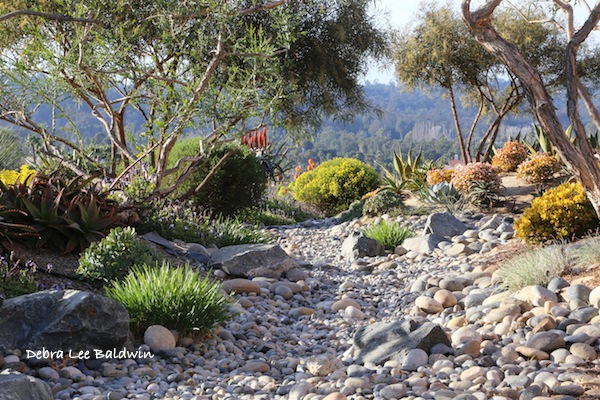
This one is the ultimate. It combines several kinds of rock, and boulders are randomly placed, mainly along the edges, but also midstream. It isn’t arrow-straight. Terrain is mounded on either side as though from erosion. Best of all, this creekbed also is a pathway, connecting front and back gardens. The designer is Tom Jesch of Waterwise Botanicals nursery in Escondido, CA.

Here’s another view of the same garden. I like how the boulders flow in gentle curves. Using river rock lends credibility; the stones have been rounded over time by flowing water.
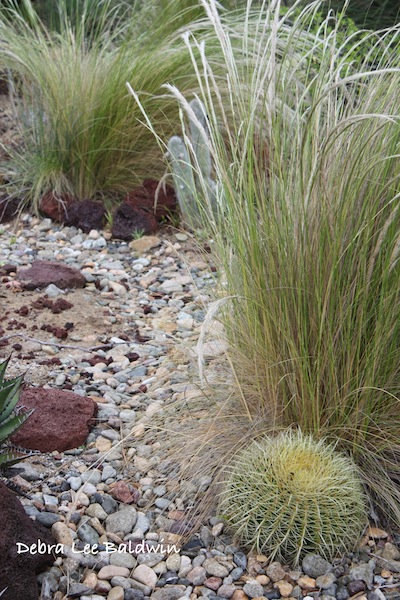
At the San Diego Botanic Garden, ornamental grasses suggest reeds that populate creek beds, even in the dry season.
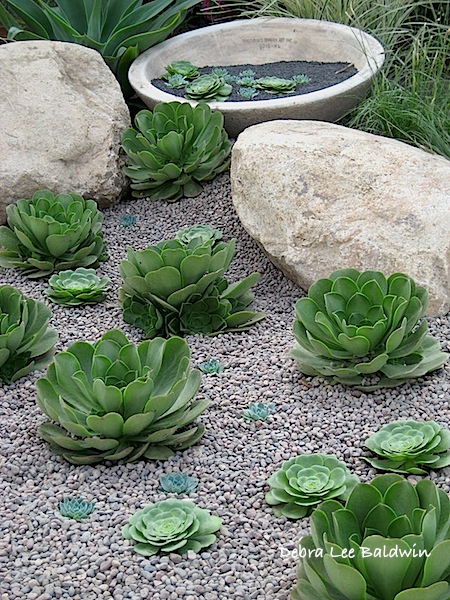
This is by Akana Design of San Diego, and was their exhibit one year at the County Fair. I love the trompe l’oeil suggestion of lily pads flowing downstream, created by aeoniums. Doubtless they were still in their nursery pots, concealed by gravel.
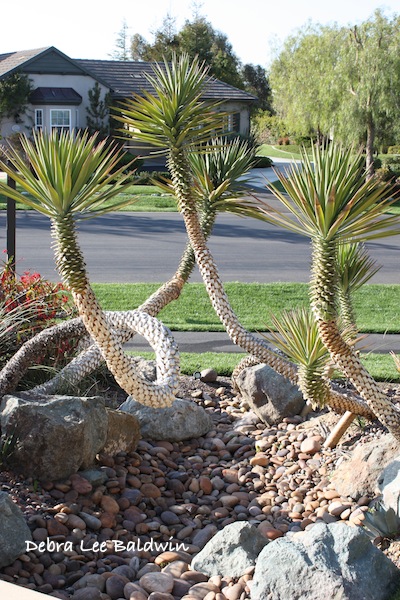
Also exhibiting sophisticated whimsy are these yuccas that were planted sideways and then turned upward. The dry creek bed sets the stage and gives them a reason to be there.

This was dug below grade, simulating the way water carves rocky terrain. I like the way plants grow in and along the bed, too. The designer is Bill Schnetz of Schnetz Landscape in Escondido.

This creek bed actually functions as one during winter rainstorms. It’s at Oasis Water Efficient Gardens nursery in Escondido.

For a pocket garden designed for Judy Tillson in Rancho Bernardo, CA, designer Laura Eubanks of Design for Serenity (San Diego) used contrasting colors of crushed rock to evoke the way water flows through terrain.

Steve McDermon of Waterwise Botanicals nursery created a more subtle dry creek bed for Jeanne Meadow’s garden in Fallbrook, CA. Aloe brevifolia clusters appear to be aquatic plants.
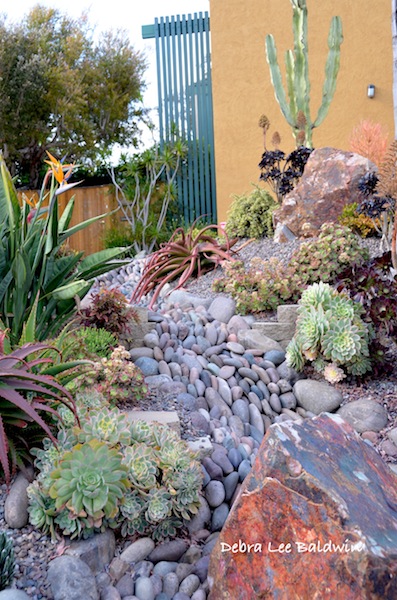
San Diego garden designer Michael Buckner positions rounded river rock on its side to suggest rapidly flowing water.

This is a dry stream bed that I show in my book, Designing with Succulents. It creates a demarkation between lawn and an ornamental border of agaves and other dry-climate plants. So, do you have the perfect place in your garden for a dry stream bed, large or small?
